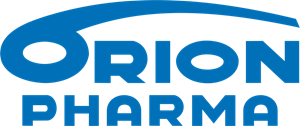Combination therapy
No results were found for your selected species
Alpha Ject micro 6
Active substance
ATC code
Species
Atlantic salmon of a minimum weight of 25 g.
Indications
For active immunisation of Atlantic salmon to reduce mortality caused by infections with Aeromonas salmonicida (furunculosis), Vibrio salmonicida (coldwater vibriosis), Listonella anguillarum serotype O1and O2a (classical vibriosis), Moritella viscosa (winter sore) and IPNV (infectious pancreatic necrosis virus).
| Onset of immunity: |
520 degree days post vaccination for the bacterial antigens and 600 degree days post vaccination for IPNV. |
| Duration of immunity: | 12 months for the bacterial antigens and 5.5 months for IPNV. |
Dose to be administered and administration route
Posology
Administer a single dose of 0.05 ml per fish. Fish should not be vaccinated more than once.
Administration route
The vaccine should be administered by intraperitoneal (i.p) injection into the midline about one fin length anterior to the base of the pelvic fin. To reduce the risk of adverse reactions, it is important to deposit the entire dose in the abdominal cavity. The injection needle used should have appropriate length to penetrate the abdominal wall and 1-2 mm into the abdominal cavity.
It is recommended to starve the fish for a minimum of 48 hours before vaccination.
The fish should be anaesthetised prior to injection.
Let the vaccine slowly reach 15-20°C by keeping it at room temperature.
Ensure a homogenous emulsion prior to use by squeezing and shaking the vaccine bag for approx. 2 minutes.
Only administer the vaccine if it appears as a homogenous, white to cream coloured emulsion.
The vaccine should not be used if the vaccine shows signs of a brownish water phase in the bottom of the container. Contact the distributor for further advice.
The injection devices used for vaccination, i.e. automatic vaccination machines or manual syringes, must be designed and suitable for administration of the recommended dose volume in the target species. The devices must be operated by trained personnel and should be calibrated according to the manufacturers' recommendation prior to use. Special care should be taken to ensure air is removed from the injection equipment (chambers and tubes) prior to vaccination. Regular dose controls are recommended.
The vaccination equipment should be thoroughly cleaned / sterilized before use.
Adverse reactions
Atlantic salmon:
|
Very common (>1 animal / 10 animals treated): |
Adhesion (Speilberg score 1-2), melanin accumulation1 |
|
Common (1 to 10 animals / 100 animals treated): |
Adhesion (Speilberg score 3) |
|
Very rare (<1 animal / 10 000 animals treated, including isolated reports): |
Adhesion (Speilberg score ≥ 4) |
1 In the abdominal cavity
The severity of adverse reactions may be influenced by different factors such as sanitation, vaccination technique, fish size at vaccination and water temperature during vaccination and in the first 6-12 weeks after vaccination. As a general precaution it is recommended to perform vaccination at water temperature of 15 °C or below. Small fish and high water temperature may increase the severity of adverse reactions.
Reporting adverse events is important. It allows continuous safety monitoring of a veterinary medicinal product. Reports should be sent, preferably via a veterinarian, to either the marketing authorisation holder or the national competent authority via the national reporting system. See the package leaflet for respective contact details.
Dispensing
POM-V - Prescription Only Medicine – VeterinarianSUMMARY OF PRODUCT CHARACTERISITCS
1. NAME OF THE VETERINARY MEDICINAL PRODUCT
ALPHA JECT micro 6 emulsion for injection for Atlantic salmon.
2. QUALITATIVE AND QUANTITATIVE COMPOSITION
1 dose (0.05 ml) contains:
Active substances:
Formaldehyde inactivated cultures of:
Aeromonas salmonicida subsp. salmonicida 12.6 log2 ELISA units
Listonella anguillarum* serotype O1 RPS ≥ 75 %
Listonella anguillarum* serotype O2a RPS ≥ 75 %
Vibrio salmonicida RPS ≥ 90 %
Moritella viscosa 10.7 log2 ELISA units
Infectious Pancreatic Necrosis Virus serotype Sp 0.12-0.28 AU
ELISA units: Serological response in Atlantic salmon,
RPS: Relative Percentage Survival is based on results from challenge studies on Atlantic salmon at 60% mortality in the control group.
AU: Antigenicity Units (quantity of virus antigen measured in the final product). * Listonella anguilllarum is synonymous with Vibrio anguillarum.
Adjuvant:
Paraffin, light liquid (mineral oil): 23 mg.
Excipients:
For the full list of excipients, see section 6.1.
3. PHARMACEUTICAL FORM
Emulsion for injection.
White to cream coloured.
4. CLINICAL PARTICULARS
4.1 Target species
Atlantic salmon (Salmo salar) of a minimum weight of 25 g.
4.2 Indications for use, specifying the target species
For active immunisation of Atlantic salmon to reduce mortality caused by infections with Aeromonas salmonicida (furunculosis), Vibrio salmonicida (coldwater vibriosis), Listonella anguillarum serotype O1and O2a (classical vibriosis), Moritella viscosa (winter sore) and IPNV (infectious pancreatic necrosis).
Onset of immunity: 520 degree days post vaccination for the bacterial antigens and 600 degree days post vaccination for IPNV.
Duration of immunity: 12 months for the bacterial antigens and 5.5 months for IPNV.
4.3 Contraindications
None.
4.4 Special warnings for each target species
Vaccinate healthy fish only.
4.5 Special precautions for use
Special precautions for use in animals
Vaccination should preferably be performed at water temperatures of 15°C or below.
Do not vaccinate at water temperatures below 3°C or above 18°C. Avoid vaccination during smoltification.
Special precautions to be taken by the person administering the veterinary medicinal product to animals
People with known hypersensitivity to fish vaccines should avoid contact with the veterinary medicinal product.
Protective equipment consisting of guarded needles should be used during manual vaccination.
Ensure that the method of fixation and handling of the fish minimises the risk of accidental self-injection. Repeated self-injections may aggravate the adverse effects or increase the risk of anaphylactic shock.
To the user:
This veterinary medicinal product contains mineral oil. Accidental injection/selfinjection may result in severe pain and swelling, particularly if injected into a joint or finger, and in rare cases could result in the loss of the affected finger if prompt medical attention is not given. If you are accidentally injected with this veterinary medicinal product, seek prompt medical advice even if only a very small amount is injected and take the package leaflet with you. If pain persists for more than 12 hours after medical examination, seek medical advice again.
To the physician:
This veterinary medicinal product contains mineral oil. Even if small amounts have been injected, accidental injection with this product can cause intense swelling, which may, for example, result in ischaemic necrosis and even the loss of a digit. Expert, PROMPT, surgical attention is required and may necessitate early incision and irrigation of the injected area, especially where there is involvement of finger pulp or tendon.
4.6 Adverse reactions (frequency and seriousness)
The frequency of adverse reactions observed after vaccination in laboratory studies and field trials:
|
Very common |
Melanisation in the abdominal cavity |
|
Mild visceral adhesions (Speilberg score 1-2) |
|
|
Common |
Moderate visceral adhesions (Speilberg score 3) |
|
Very rare |
Serious visceral adhesions (Speilberg score ≥ 4) |
The severity of adverse reactions may be influenced by different factors such as sanitation, vaccination technique, fish size at vaccination and water temperature during vaccination and in the first 6-12 weeks after vaccination. As a general precaution it is recommended to perform vaccination at water temperature of 15 °C or below.
Small fish and high water temperature may increase the severity of adverse reactions.
The frequency of adverse reactions is defined using the following convention:
- very common (more than 1 in 10 animals treated displaying adverse reaction(s))
- common (more than 1 but less than 10 animals in 100 animals treated)
- uncommon (more than 1 but less than 10 animals in 1,000 animals treated)
- rare (more than 1 but less than 10 animals in 10,000 animals treated)
- very rare (less than 1 animal in 10,000 animals treated, including isolated reports).
4.7 Use during pregnancy, lactation or lay
The potential effect of vaccination on spawning function has not been investigated. Vaccination of broodfish should only be done according to a benefit-risk assessment by the responsible veterinarian/fish health biologist.
4.8 Interaction with other medicinal products and other forms of interaction
No information is available on the safety and efficacy of this vaccine when used with any other veterinary medicinal product. A decision to use this vaccine before or after any other veterinary medicinal product therefore needs to be made on a case by case basis.
4.9 Amounts to be administered and administration route
Posology
Administer a single dose of 0.05 ml per fish. Fish should not be vaccinated more than once.
Administration route
The vaccine should be administered by intraperitoneal (i.p) injection into the midline about one fin length anterior to the base of the pelvic fin. To reduce the risk of adverse reactions, it is important to deposit the entire dose in the abdominal cavity. The injection needle used should have appropriate length to penetrate the abdominal wall and 1-2 mm into the abdominal cavity.
It is recommended to starve the fish for a minimum of 48 hours before vaccination.
The fish should be anaesthetised prior to injection.
Let the vaccine slowly reach 15-20°C by keeping it at room temperature.
Ensure a homogenous emulsion prior to use by squeezing and shaking the vaccine bag for approx. 2 minutes.
Only administer the vaccine if it appears as a homogenous, white to cream coloured emulsion.
The vaccine should not be used if the vaccine shows signs of a brownish water phase in the bottom of the container. Contact the distributor for further advice.
The injection devices used for vaccination, i.e. automatic vaccination machines or manual syringes, must be designed and suitable for administration of the recommended dose volume in the target species. The devices must be operated by trained personnel and should be calibrated according to the manufacturers' recommendation prior to use. Special care should be taken to ensure air is removed from the injection equipment (chambers and tubes) prior to vaccination. Regular dose controls are recommended.
The vaccination equipment should be thoroughly cleaned / sterilized before use.
4.10 Overdose (symptoms, emergency procedures, antidotes), if necessary
Following administration of 0.1 ml of the vaccine (double dose) no other adverse reactions than those described in section 4.6 were seen.
4.11 Withdrawal period(s) Zero degree days.
5. IMMUNOLOGICAL PROPERTIES
Pharmacotherapeutic group: Immunologicals for pisces, inactivated viral and inactivated bacterial vaccines. ATC vet code: QI10AL 02.
Stimulates development of active immunity against Aeromonas salmonicida, Listonella anguillarum serotype O1, Listonella anguillarum serotype O2a, Vibrio salmonicida, Moritella viscosa and infectious pancreatic necrosis virus (IPNV) in Atlantic salmon.
6. PHARMACEUTICAL PARTICULARS
6.1 List of excipients
Sorbitan oleate
Polysorbate 80
Water for injections
6.2 Major incompatibilities
Do not mix with any other veterinary medicinal product.
6.3 Shelf life
Shelf life of the veterinary medicinal product as packaged for sale:18 months. Shelf life after first opening the immediate packaging: 10 hours.
6.4 Special precautions for storage
Store and transport refrigerated (2°C-8°C).
Do not freeze.
Protect from light.
6.5 Nature and composition of immediate packaging
250 ml or 500 ml multilayer plastic foil bag. The giving port is closed with a sealed rubber stopper.
Pack sizes:
250 ml and 500 ml.
Not all pack sizes may be marketed.
6.6 Special precautions for the disposal of unused veterinary medicinal product or waste materials derived from the use of such products
Any unused veterinary medicinal product or waste materials derived from such veterinary medicinal product should be disposed of in accordance with local requirements.
7. MARKETING AUTHORISATION HOLDER
Pharmaq AS
Industrivegen 50
Skogmo Industriområde
7863 Overhalla
Norway
8. MARKETING AUTHORISATION NUMBER
Vm 21714/5001
9. DATE OF FIRST AUTHORISATION
15 March 2019
10. DATE OF REVISION OF THE TEXT
June 2023
Approved 22 June 2023
![]()
 TRUSTED SOURCE
TRUSTED SOURCE









